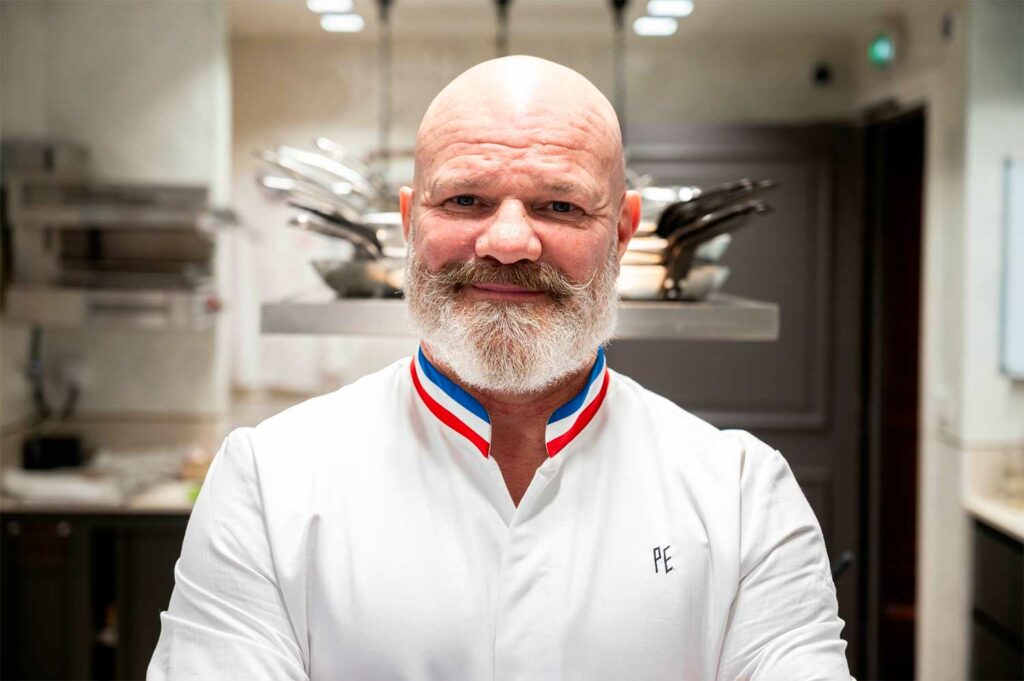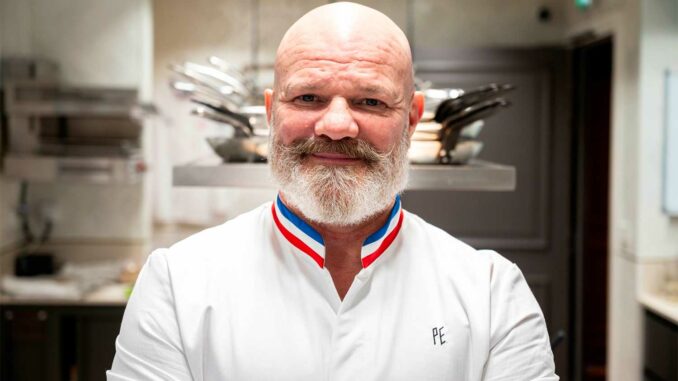
From MOF to Michelin, discover Philippe Etchebest’s rigorous path, signature dishes, and Bordeaux restaurants—Maison Nouvelle and Le Quatrième Mur.
Few figures in French cooking command as much attention as Philippe Etchebest. A trained competitor and former rugby player turned Michelin-starred chef, he has blended discipline, pedagogy, and a relentless respect for product into a recognizable culinary voice. His career spans the elegance of Saint-Émilion’s grand tables, the popular appeal of television, and a Bordeaux portfolio that now includes a two-star gastronomic house. This portrait traces his formation, style, and influence; decodes his signature dishes; and explains why his restaurants matter to anyone curious about French cuisine, French gastronomy, and the contemporary identity of Bordeaux’s dining scene.
The chef: vision and background
Origins and education
Philippe Etchebest was born in Soissons and grew up in a family of restaurateurs, living above the dining room and learning early that kitchens run on endurance as much as inspiration. He trained at the hospitality school in Talence before moving through serious Paris and southwest brigades—an apprenticeship that prioritized the fundamentals: sauces, stocks, precise cuisson, and uncompromising product selection. Early leadership roles followed, including head-chef positions in Saint-Émilion and Périgord, where he learned to translate vineyard-country produce into technically exacting cuisine. He earned the title of Meilleur Ouvrier de France in 2000, a turning point that sharpened his competitive instinct and confirmed his command of classical technique. Subsequent years at the Hostellerie de Plaisance, where he secured a second Michelin star, established him as a chef who marries terroir with rigor. Television later expanded his audience, but the craft was laid in kitchens that demand consistency plate after plate.
Culinary philosophy and style
Etchebest’s cooking is rooted in the codes of French cooking—clear sauces, exact seasoning, and structure—yet it reads as contemporary thanks to his insistence on freshness and balance. Dishes use regional produce as a compass: duck from the Southwest, ceps and pasture mushrooms, Aquitaine vegetables, river fish when in season. He talks about respect for product not as a slogan but as a method: buy well, handle less, extract flavor through technique rather than ornament. The plates are lucid, rarely overloaded, and calibrated for contrast—silky against crisp, roasted depth against vegetal lift. Modern tools appear where they add precision (vacuum cooking for texture, a siphon for lightness), but the goal is flavor clarity. Above all, he favors hospitality with presence: a chef at the pass, a brigade drilled, a dining room guided rather than lectured—tenets that reflect his coaching role on TV and in his own brigades.
Awards and recognition
Etchebest’s résumé spans France’s most exacting honors. He is a Meilleur Ouvrier de France (2000), a distinction that recognizes mastery across craft as much as cuisine. At Saint-Émilion’s Hostellerie de Plaisance he earned and held two Michelin stars. In Bordeaux, his gastronomic restaurant Maison Nouvelle now carries two Michelin stars in the 2025 guide, while the intimate counter “LA” Table d’Hôtes beneath Le Quatrième Mur holds one star. Alongside these accolades, he has been a fixture on major television programs, bringing professional standards into the public eye and mentoring young chefs on national prime time.
Broader influence
Etchebest’s impact extends beyond any single pass. Through shows such as Cauchemar en cuisine and Top Chef, he has demystified kitchen discipline for a general audience, advocating for clear management, mise en place, and financial realism. He has also used his platform to support restaurateurs in moments of crisis and to promote training and apprenticeship as pathways into the trade. In parallel, Bordeaux has become his proving ground for how a chef can anchor a city’s food identity while engaging a broad public—from a brasserie at the Grand Théâtre to a high-wire gastronomic showcase and limited-seat chef’s counter. The through-line is mentorship and standards: teaching cooks to respect classic bases and teaching guests how to read a plate.
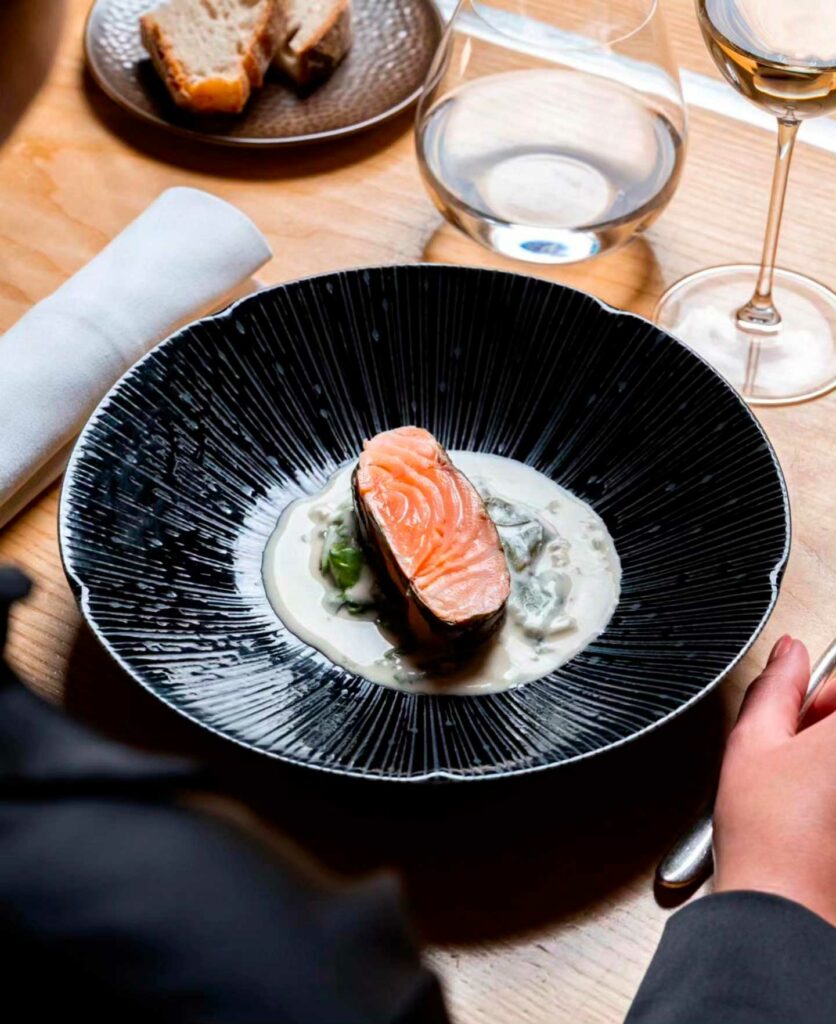
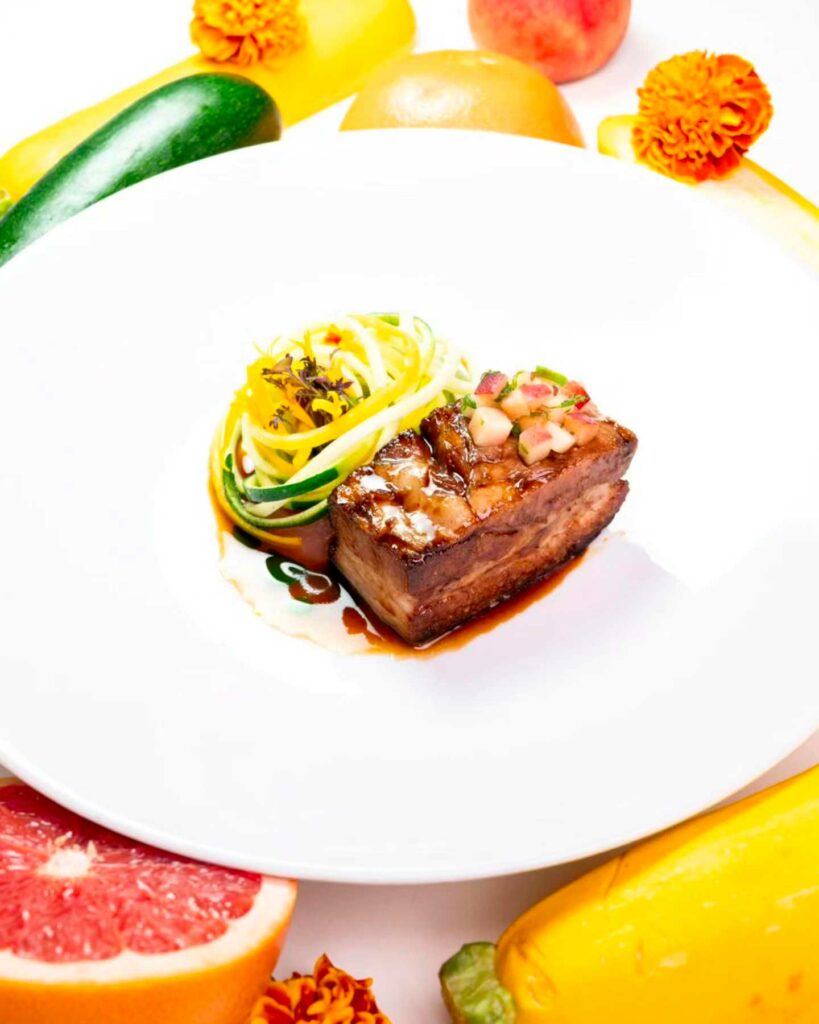
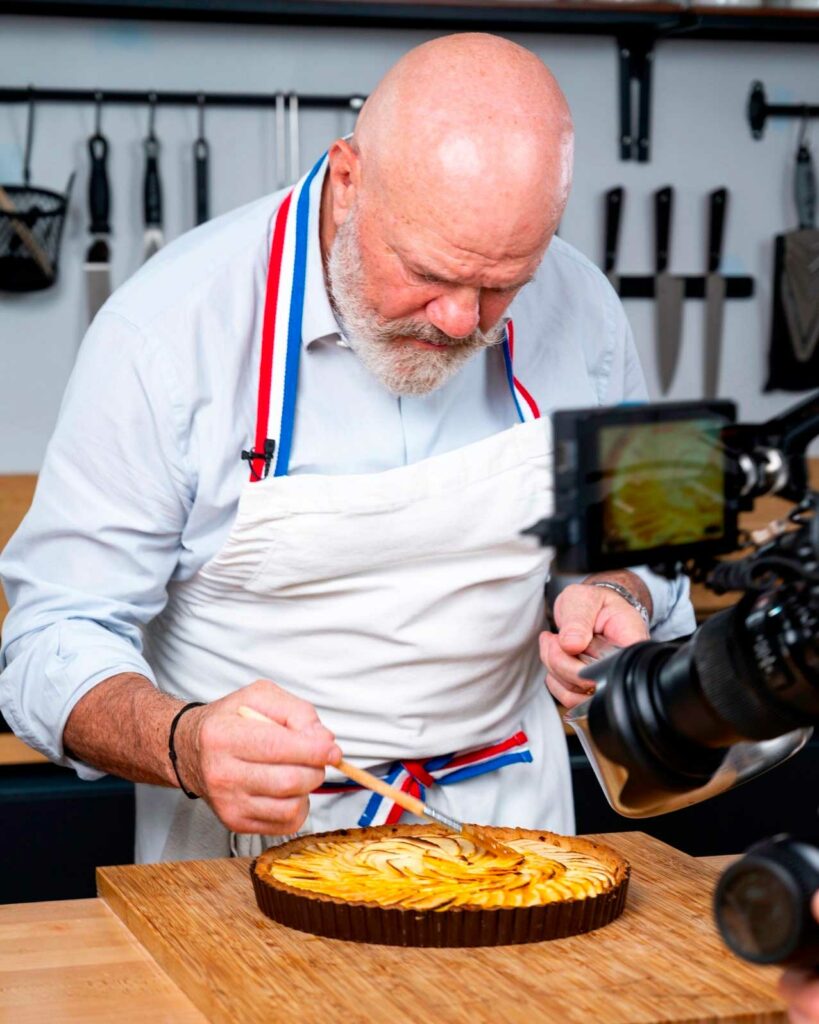
The restaurant: concept and experience
Location and atmosphere
Le Quatrième Mur occupies a singular stage: the Grand Théâtre de Bordeaux on Place de la Comédie. The brasserie channels the theater’s neoclassical gravitas into a bustling room where the choreography of service is part of the show. Downstairs, “LA” Table d’Hôtes seats a dozen guests at a communal counter carved into vaulted stone. Here, proximity is the luxury: you watch cooks finish sauces, carve, and plate, and you speak directly with the team guiding your progression. Across the Garonne in the Chartrons district, Maison Nouvelle feels like home by design—warm stone, gentle lighting, handcrafted tableware—yet the cooking is unapologetically ambitious. Both addresses speak the same language: Bordeaux elegance, precise service, and a sense of occasion scaled to different moods.
Cuisine and signature dishes
Two preparations have become shorthand for Etchebest’s style. First, the mushroom ravioli with seared foie gras—a study in texture and savor where a delicate pasta envelope meets the roasted perfume of foie, often lifted by an umami-rich jus. Second, a family of dishes built around autumnal mushrooms and poultry or game birds, plates that probe the border between the forest’s depth and the finesse of grand-restaurant technique. In the brasserie, signatures rotate with the seasons: crisp-skinned meats, market fish with precise cuisson, and pastry work that respects fundamentals. At “LA” Table d’Hôtes, everything is surprise—menu, pairings, even cutlery selection—yet the thread remains terroir, tension, and balance. Maison Nouvelle raises the bar: a tasting menu that reads like a Bordeaux diary, built around producers Etchebest trusts, vegetables at peak, and sauces that carry flavor without weight. Expect articulate pairings from a cellar that treats Bordeaux classics with due respect while giving space to white wines and lighter reds that flatter contemporary French gastronomy. ([MICHELIN Guide][5])
The dining experience
Service in Etchebest’s houses is drilled and personable. At Le Quatrième Mur, staff move quickly yet take time to translate the day’s specials and advise on wines suitable for a wider public. At the counter, the tone turns intimate: cooks present dishes, sommeliers sketch quick pairing logic, and the room’s small scale encourages conversation. Maison Nouvelle stretches time in a way only high gastronomy can: courses land with unhurried cadence, textures shift course to course, and an arc emerges—vegetal brightness, roasted depth, precise sweetness. Price points reflect the spectrum, from the brasserie’s accessible comfort to two-star tasting menus for special occasions. In every setting, the promise is the same: ingredient integrity, technical command, and hospitality that feels guided rather than staged.
Awards, sustainability, and other highlights
Beyond the headline stars, Etchebest’s work in Bordeaux helps anchor the city’s identity as a culinary capital with more to offer than wine. Maison Nouvelle’s ascent to two stars confirms that Bordeaux can sustain destination fine dining at the highest level, while “LA” Table d’Hôtes demonstrates how a chef can compress excellence into an intimate, memorable format. Etchebest has also shown a knack for bringing craftsmanship to a broader audience: in 2023 he introduced a street-food pop-up during the Rugby World Cup, translating his mushroom ravioli and foie gras into a hand-held, affordable bite without compromising inputs or technique. In media and public advocacy, he continues to argue for training, standards, and operational resilience—messages that resonate in an industry where margins are thin and volatility is real.
A chef’s signature, a city’s voice
Etchebest’s enduring appeal lies in coherence. He is at once a Michelin-starred chef and a coach; a guardian of classical technique and an advocate for accessibility; a figure of Bordeaux gastronomy who remembers that restaurants are, first, places of welcome. That coherence shows on the plate—structured sauces, disciplined cuisson, true seasonality—and in the room, where teams move with purpose and pride. For readers curious about French food culture, his restaurants offer a practical education in how regional identity, craft, and contemporary tastes can align. For cooks, they model how to build flavor from the ground up: buy better, cut cleaner, season more precisely, and let the product speak. Whether you sit under the Grand Théâtre’s painted ceiling, along the stone vaults of “LA” Table d’Hôtes, or at a quiet table in Chartrons, the through-line is unmistakable: a chef shaped by work and competition who lets his city and its producers set the tone. In an era of trend chasing, Philippe Etchebest’s Bordeaux feels both modern and grounded—proof that regional specialties, done with discipline, still lead the conversation in French cuisine and beyond.
Cook in France is your independant source for food in France.
